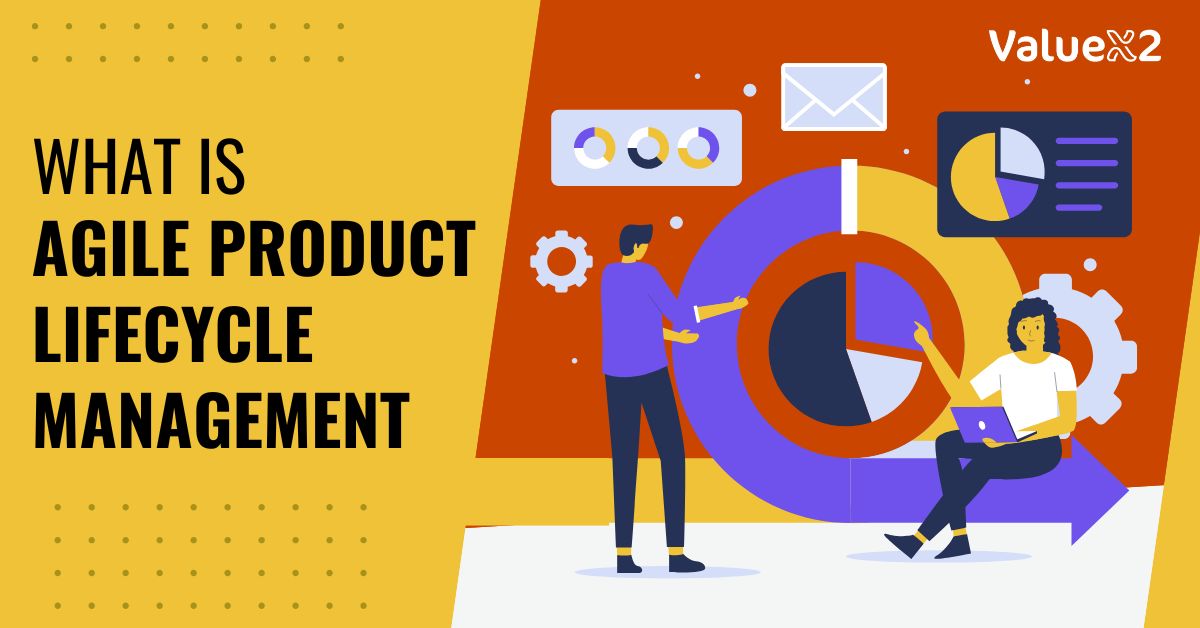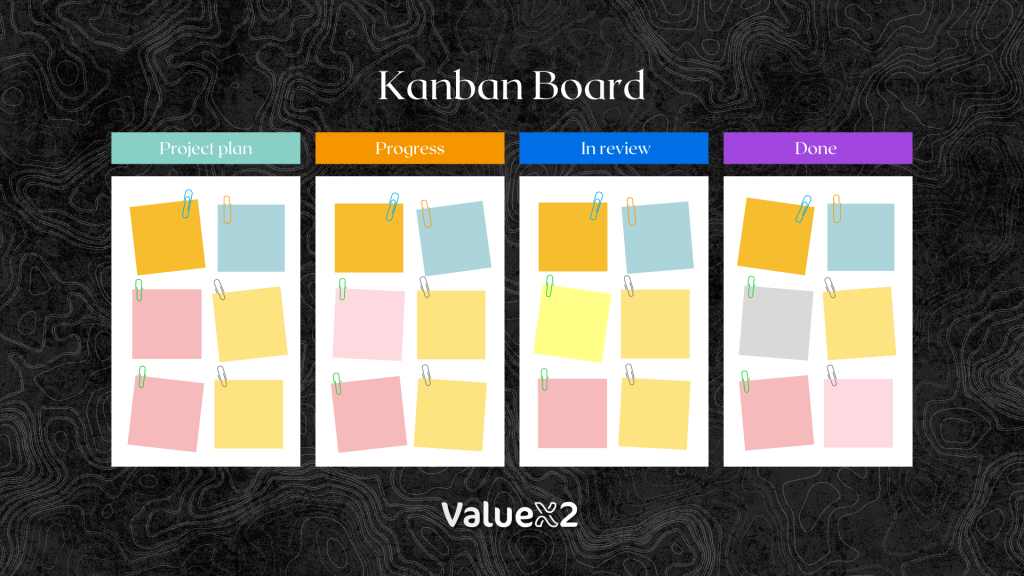Are you sick of speed restrictions due to complex procedures? Agile Product Lifecycle Management provides flexibility, collaboration and speed to your product management. This is the right strategy for having the capability to meet changes that happen in the market and offering the customers what they need!

Introduction
The global market is dynamic and constantly outcompeting itself; thus, businesses have no option but to evolve. Traditional Product Lifecycle Management systems have many limitations; most opt for sequential, mechanistic approaches that are reactive and not fit for the dynamic environment we have today. Introducing Agile Product Lifecycle Management; a new generation change-ready approach that blends the rigidity of traditional PLM with the principles of Agile.
By so doing, Agile Product Lifecycle Management brings agility in working, timely feedback, and customer-engaging characteristics to create revolutionary change among organizations that aim to create and deliver high-quality goods more effectively. For organizations interested in improving overall processes or making their teams more efficient and competitive Agile PLM provides the tooling and thinking necessary. It’s time to take a closer look at what Agile Product Lifecycle Management is and how it differs from the conventional way of working, as well as discuss the reasons why it will become the new norm in the field of product development.
What is Agile Product Lifecycle Management (PLM)?
Agile Product Lifecycle Management focuses on flexibility, collaboration and optimization in all the phases of the PLM cycle; from idea to end-of-life. Such an approach provides flexibility for companies to adapt to market changes and customers’ opinions in a bid to optimize the product portfolio.
Key Aspects:
- Flexibility: Agility also means that the system can handle change faster and smoother than traditional systems.
- Collaboration: Promotes cross-functional teamwork.
- Continuous Improvement: More emphasis is on the constant improvement of the facilities.
How Does Agile PLM Differ from Traditional PLM?
The conventional PLM workflow is a sequential process. This means that each stage in the product’s life cycle is strictly accomplished before proceeding to the next. On the other hand, Agile Product Lifecycle Management does not entail a rigid structure of the development phases which do not allow feedback to be integrated later as is the case with the waterfall product management model.
Comparison Table
| Aspects | Traditional Product Lifecycle Management | Agile Product Lifecycle Management |
| Process Structure | It is a sequential model in which each step occurs in a particular order, with each stage being compulsory. | Each phase is compatible with the next and can overlap. There can be repeated passes through the previous stages depending on feedback acquired. |
| Feedback Integration | The feedback concept is usually implemented at certain stages only, which renders its flexibility low. | Promotes constant feedback, fixing, and revisions during the development and distribution of a product. |
| Adaptability to Change | Reacting on a slow pace, and bureaucratic procedures to be followed for the implementation of changes. | Very flexible, you are thus able to quickly respond to changes in the market or customers’ requirements. |
| Collaboration | Largely operating in functional silos and do not often integrates functions between departments. | Cultivates cooperation between groups and divisions, giving project integration and improved cooperation. |
| Project Scope | It is set right from the outset and remains constant till the end of the cycle. | It is dynamic to accommodate a new specification or new objectives. |
Why Integrate Agile with Product Lifecycle Management?
The integration of Agile with PLM has several advantages such as faster time to market, better quality, and customer satisfaction. Through Agile methodologies, it becomes possible to organize large projects into revolvable subprojects hence constant feedback measures would be implemented.
Benefits:
- Faster Time-to-Market: This means that Agile Product Lifecycle Management enhances the development cycle.
- Improved Quality: Constant testing and feedback will increase the quality.
- Customer Satisfaction: With an iterative approach and focus on customer collaboration, product development becomes more customer-centred.
What Are the Key Phases of Agile Product Lifecycle Management?
Agile PLM typically involves several key phases, which include planning, development, testing, deployment and maintenance. Every phase is flexible and allows teams to revisit and rework the stages. It is based on feedback received by the teams and/or the results of the overall project.
Phases of Agile Product Lifecycle Management:
- Planning: It involves formulating objectives and laying down strategies and plans.
- Development: Grow the product step by step.
- Testing: The major purpose they will serve is to ensure the products in the market and the shipments that leave our manufacturing plants are as accurate and efficient as the ones tested in the laboratory.
- Deployment: The next step is to launch the product into the market.
- Maintenance: Develop and maintain it throughout the lifetime of the product continually.
How Do Kanban and Agile Product Lifecycle Management Work Together?

Kanban is the strategic construct that works hand in hand with Agile PLM. This tool offers an overview of work in progress and promotes the tracking of tasks. In Agile PLM, even though other methods of tracking progress are possible, the Kanban boards are perfect for-
Identification of progress,
Identifying issues with flow, and
Prioritizing tasks such that product development is free from any impediments.
Kanban in Agile PLM:
- Visual Management: The fact that targets are set, and boards are visible means that Kanban boards give visibility.
- Task Prioritization: They assist the teams to concentrate on the most important goals.
- Process Optimization: Corrects log jams.
Agile vs. Waterfall: Which is Better for PLM?
Agile is more suitable for projects that have uncertainties and are in a state of constant change. Whereas, Waterfall is suitable for controlled and sequential projects.
The latter is especially suitable for projects with clearly defined needs and schedules, on the other hand, Agile is more suitable for flexible projects that include frequent feedback and reports.
Agile vs. Waterfall Comparison:
| Features | Agile Technique | Waterfall Technique |
| Flexibility | High | Low |
| Feedback Integration | Continues through all stages | At specific stages |
| Timeline | Iterative, with frequent iterations | Linear, with a fixed timeline |
| Risk Management | Mitigated through continuous feedback | Identified at the beginning, not flexible |
| Approach | Iterative and incremental | Sequential and rigid |
| Change Management | Fast and adaptive | Slow and formal |
| Team Collaboration | High, with cross-functional teams | Low, typically siloed teams |
What Role Does SAFe Play in Agile Product Lifecycle Management?
The Scaled Agile Framework or SAFe is an organization and workflow pattern for implementing lean and Agile more effectively in enterprises. Still, in the Agile PLM context, SAFe offers the framework to use Agile for large projects, coordinating multiple teams, and keeping in mind the end product.
SAFe in Agile PLM:
- Scaling Agile: Ensures Agile practices are scalable across teams.
- Alignment: Keeps all teams aligned with product goals.
- Quality Assurance: Maintains high standards of product quality.
How Does Agile Product Lifecycle Management Support Continuous Improvement?
The main focus of Agile PLM includes the sustainable improvement of processes. This means that processes must be put through tests regularly and go through updates to improve product quality and process speed. This subtopic can delve into how Agile PLM requires teams to continuously evaluate what they are doing and the system’s ability to incorporate feedback and adjust as required and factors in the product’s life cycle to develop the product to fit the market and the customer needs. It may also include activities like retrospectives, and sprint reviews and how these add up to the continuous enhancement processes throughout the product’s lifecycle.
What Are the Challenges of Implementing Agile PLM?
Even though the Agile PLM has a lot to provide for its adopters, there can be some implementation issues. Some of the issues are;
Resistance to change in how the organization functions,
Challenges involved in extending Agile throughout the large organization, and
How to implement Agile together with PLM systems that are already in place
If a company addresses these challenges it will offer a more realistic view of Agile Product Liefecyle Management, pointing to its advantages and drawbacks to the readers.
What’s More To Know?
Check out ValueX2’s future classes: Agility in HR, SSM, SASM, SAFe POPM and more such courses. These courses are ideal to meet the needs of ambitious professionals in whom the need to contribute as an agile leader emerges, these courses equip you with up-to-date knowledge and tools that can revolutionize your career. For people who want to grow in their existing area of practice as well as those who wish to make a career transition, our courses give you the edge. It would be wise not to miss the chance to keep you updated with the latest trends in the constantly developing atmosphere of agile practices. Know about our upcoming training sessions here!
Conclusion
Thus, it can be stated that Agile Product Lifecycle Management can be introduced as the flexible method that is rather effective for organization belonging to hi-tech volatile markets. Compared to the defined and very structured approach of the traditional PLM, there is the Agile PLM concept, which includes interacting and integrating frequently, adapting requirements and feedback, clearly implying that products should change to reflect customers’ needs and market changes.
The adoption of Agile PLM brings many benefits where the companies should make enhancements in the quality of service and time-to-market as well as innovation. However, as with every concept or approach that has been implemented, some difficulties may be encountered when employing Agile PLM and these include; employee resistance to change, changes that need to happen within an organization and so on.
Of course, there are several challenges on this way, but overall, the long-term benefits make Agile PLM one of the most effective tools for organizations everywhere desiring to remain relevant and provide consumers with top-notch products.
FAQs
Q1: Agile Product Lifecycle Management: What is the main benefit of it?
A1: The major benefit is the fact that it can easily adapt and respond to change and incorporate feedback from the customers at every stage of the product cycle.
Q2: Does agile PLM help in enhancing product quality in any way?
A2: As the process of testing begins iteratively and feedback is taken into consideration, quality control becomes constant in Agile PLM. Here’s the process flow for better understanding:
- Streamlining processes for consistency and error reduction.
- Improving collaboration between teams, enabling early problem detection.
- Tracking product changes to ensure adherence to quality standards.
- Integrating compliance with industry regulations.
- Enabling continuous monitoring and improvement throughout the product lifecycle.
Q3: Can we use Agile PLM for all types of products?
A3: Yes, one can customise Agile PLM for use in different types of industries and product kinds, more specifically, those that change often, and need to respond to market changes frequently.
Q4: In what way does Agile PLM enhance cross-functional teams?
A4: Agile PLM can help to enhance cross-functional team collaboration since it is based on the principles of communication, outstanding visibility and goal alignment. Parts like daily scrums, sprint meetings, and scrum reviews compel employees across different departments to collaborate, synchronize themselves, and solve problems as and when they occur.
Q5: In what way does Agile PLM use tools to track and control the product life cycle?
A5: Some of the most common tools that can be used in Agile PLM are Jira Or Trello to track the tasks and progress GIT for managing the changes that have been made to the code and Slack or Microsoft Teams for communication purposes. They enhance efficiency in their working operations, enable communication and sharing of real-time updates and keep various teams in synchronization throughout the product development process.

Bhavna is an Agile Coach and Consultant with 15+ years of experience in advisory, corporate finance, IT assurance, and operations at Big 4 and within the industry in the UK and India. She has recently been the CEO of a start-up where she implemented agile practices within HR, Marketing, and Product teams.
She is also a SAFe® Practice Consultant (SPC) and authorized instructor for ICAgile Agility in HR (ICP-AHR), Agility in Marketing (ICP-MKG), and Business Agility Foundations (ICP – BAF) training courses. She provides training for agile transformation to corporate, public, and private batches, as well as consulting for enterprise agile transformation.






